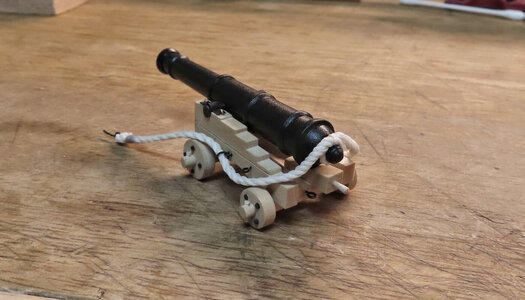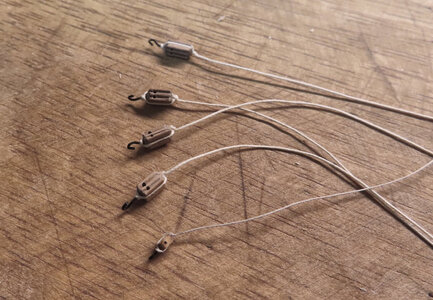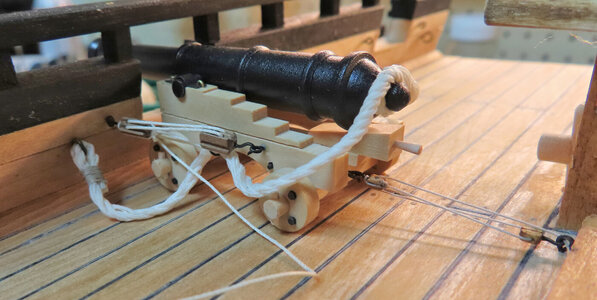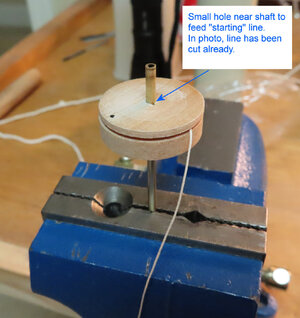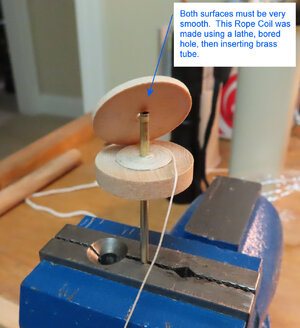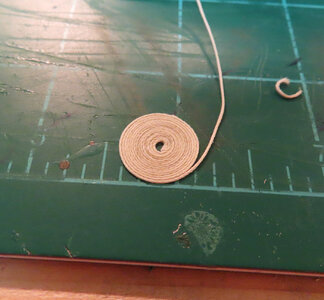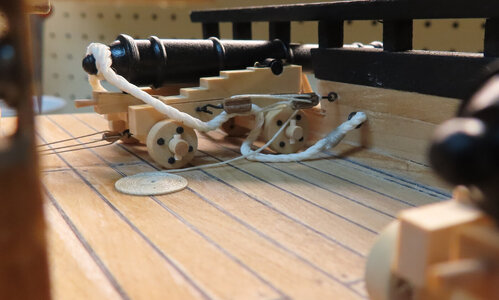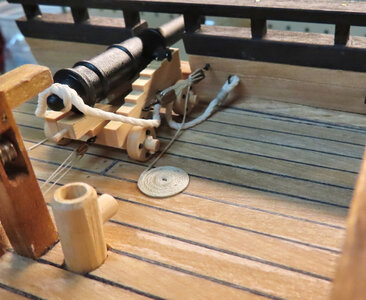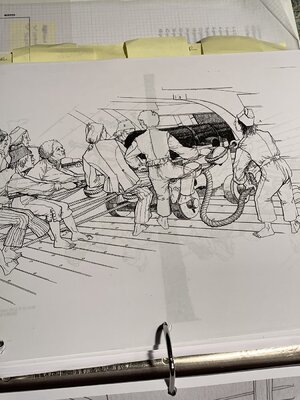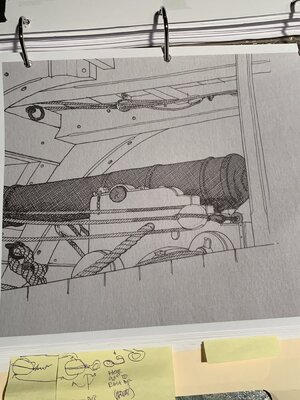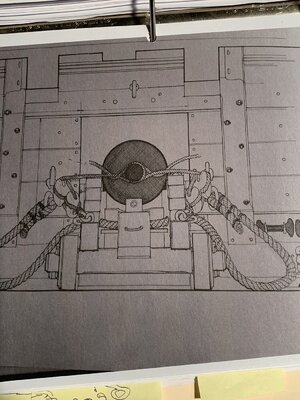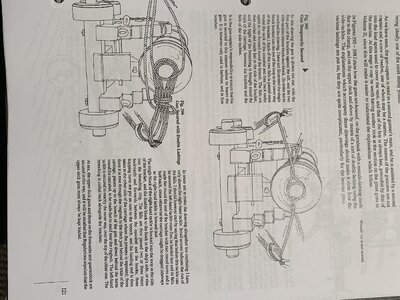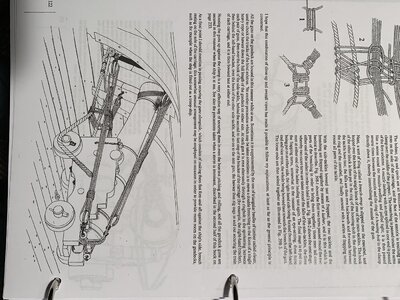Thank you Kurt and Uwe, et al.
Now, to prepare the ring bolts and other hardware for the final rigging, including having to make my own blocks. I still have not found a breeching line that I am happy with. I just used a tiny file to make the grooves on the blocks. Sorry that I did not include photos of that whole step by step. Kind of hard holding the camera and doing that at the same time.
Also, I finally added the chock for the wheels and trimmed off axles.
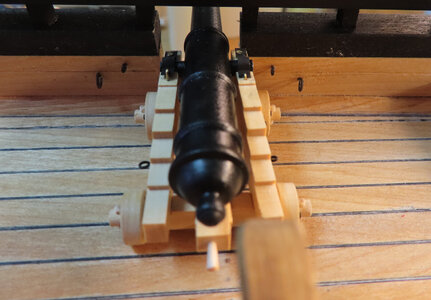
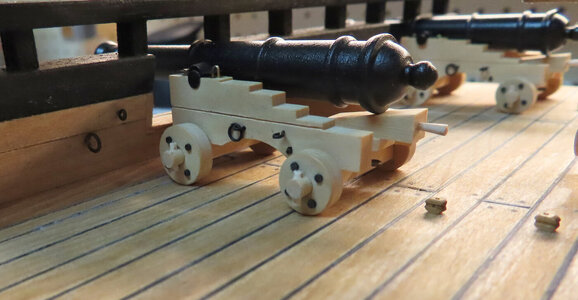
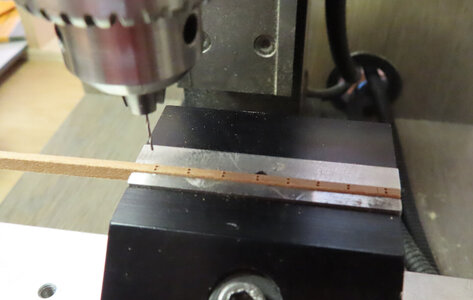
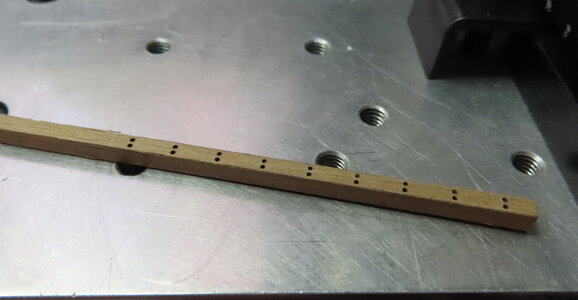
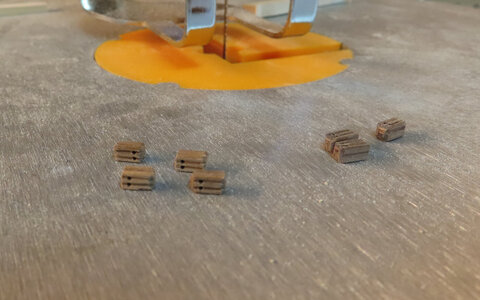
Now, to prepare the ring bolts and other hardware for the final rigging, including having to make my own blocks. I still have not found a breeching line that I am happy with. I just used a tiny file to make the grooves on the blocks. Sorry that I did not include photos of that whole step by step. Kind of hard holding the camera and doing that at the same time.
Also, I finally added the chock for the wheels and trimmed off axles.










